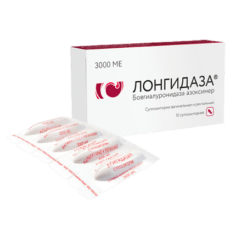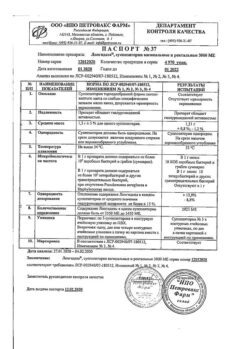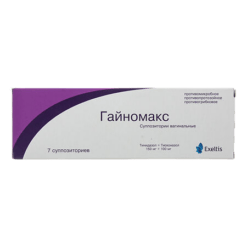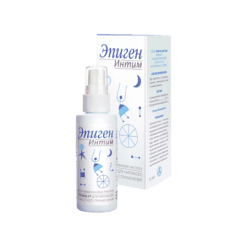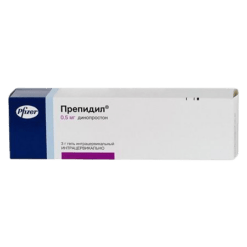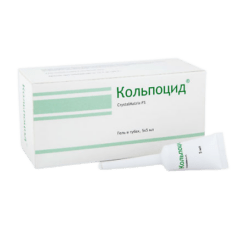No products in the cart.
Novinet, 21 pcs.
€20.51 €17.09
EAN: 5997001357781
SKU: 117455
Categories: Contraceptive, Gynecology and Obstetrics, Hormonal, Medicine
Description
Pharmacodynamics
Novinet® is a combined oral contraceptive drug whose main contraceptive effect is to inhibit gonadotropin synthesis and suppress ovulation. In addition, by increasing the viscosity of cervical mucus, the movement of sperm through the cervical canal is slowed, and changes in the endometrium prevent the implantation of a fertilized egg.
Ethinyl estradiol is a synthetic analogue of endogenous estradiol, desogestrel has pronounced gestagenic and anti-estrogenic effects similar to endogenous progesterone, weak androgenic and anabolic activity. Novinet® has a favorable effect on lipid metabolism: increases the concentration of high-density lipoproteins (HDL) in the blood plasma, while not affecting the low-density lipoproteins (LDL).
When using the drug it is registered a significant decrease of amount of lost blood each month (at initial menorrhagia), menstrual cycle is normalized, and favorable effect on skin is noted (especially at the presence of acne vulgaris).
Pharmacokinetics
Desogestrel
Intake
Intake
. When taken orally, desogestrel is absorbed from the gastrointestinal (GI) tract quickly and almost completely. It is metabolized to 3-keto-desogestrel, which is the biologically active metabolite of desogestrel. The average maximum serum concentration (Cmax) is 2 ng/ml, reached 1.5 hours later (Tmax) after taking the tablet. Bioavailability of the drug is 62-81%. Distribution in the body 3-keto-desogestrel binds to plasma proteins, mainly to albumin and to globulin binding sex hormones (GSSH). The volume of distribution is 1.5 L/kg.
Metabolism
In addition to 3-keto-desogestrel, which is formed in the liver and in the intestinal wall, other metabolites are formed: Zα-ON-desogestrel, Zβ-ON-desogestrel, Zα-ON-5α-N-desogestrel (first phase metabolites). They have no pharmacological activity, and partially, by conjugation (second phase metabolism), are converted to polar metabolites (sulfates and glucuronates). Clearance from blood plasma is about 2 ml/min per 1 kg of body weight.
Exhaustion
The average half-life of 3-keto-desogestrel is 30 hours. Metabolites are excreted by the kidneys and through the intestine (in a ratio of 4:6).
Stable concentrations are established by the second half of the cycle. At this time, ketogestrel levels increase 2-3 times.
Ethinylestradiol
Ethinylestradiol absorption
Ethinylestradiol is absorbed from the gastrointestinal tract quickly and completely. The average maximum concentration in blood serum (Cmax) is 80 pg/ml – 1-2 hours (Tmax) after taking the tablet. Bioavailability due to presystemic conjugation and first-pass effect is about 60%.
Distribution in the body
Ethinylestradiol is completely bound to plasma proteins, mainly to albumin. The volume of distribution is 5 l/kg.
Metabolism
The presystemic conjugation of ethinylestradiol is significant. Passing the intestinal wall (first phase of metabolism) it undergoes conjugation in the liver (second phase of metabolism). Ethinylestradiol and its conjugates of the first phase of metabolism (sulfates and glucuronides) are excreted in bile and enter enter enterohepatic circulation.
The blood plasma clearance is about 5 ml/min per 1 kg body weight.
Extractions from the body
The average half-life of ethinylestradiol is about 24 hours. About 40% is excreted by the kidneys and about 60% through the intestine.
Stable concentration is established by 3-4 days, with blood serum levels of ethinylestradiol 30-40% higher than after a single dose
Indications
Indications
Contraception.
Pharmacological effect
Pharmacological effect
Pharmacodynamics
Novinet® is a combined oral contraceptive drug, the main contraceptive effect of which is to inhibit the synthesis of gonadotropins and suppress ovulation. In addition, by increasing the viscosity of cervical mucus, the movement of sperm through the cervical canal slows down, and changes in the condition of the endometrium prevent the implantation of a fertilized egg.
Ethinyl estradiol is a synthetic analogue of endogenous estradiol; desogestrel has a pronounced gestagenic and antiestrogenic effect, similar to endogenous progesterone, and weak androgenic and anabolic activity. Novinet® has a beneficial effect on lipid metabolism: it increases the concentration of high-density lipoproteins (HDL) in the blood plasma, without affecting the content of low-density lipoproteins (LDL).
With the use of the drug, there is a significant decrease in the amount of monthly blood lost (with initial menorrhagia), the menstrual cycle is normalized, and a beneficial effect on the skin is noted (especially in the presence of acne vulgaris).
Pharmacokinetics
Desogestrel
Suction
When taken orally, desogestrel is absorbed from the gastrointestinal tract (GIT) quickly and almost completely. Metabolized to 3-keto-desogestrel, which is a biologically active metabolite of desogestrel. The average maximum concentration in blood serum (Cmax) is 2 ng/ml, achieved 1.5 hours (Tmax) after taking the tablet. The bioavailability of the drug is 62-81%. Distribution in the body 3-keto-desogestrel binds to blood plasma proteins, mainly albumin and sex hormone binding globulin (SHBG). The volume of distribution is 1.5 l/kg.
Metabolism
In addition to 3-keto-desogestrel, which is formed in the liver and in the intestinal wall, other metabolites are formed: Zα-OH-desogestrel, Zβ-OH-desogestrel, Zα-OH-5α-N-desogestrel (first phase metabolites). They do not have pharmacological activity, and are partially converted into polar metabolites (sulfates and glucuronates) through conjugation (the second phase of metabolization). Clearance from blood plasma is about 2 ml/min per 1 kg of body weight.
Excretion from the body
The average half-life of 3-keto-desogestrel is 30 hours. Metabolites are excreted by the kidneys and through the intestines (in a ratio of 4:6).
A stable concentration is established by the second half of the cycle. At this time, the level of ketogestrel increases 2-3 times.
Ethinyl estradiol
Suction
Ethinyl estradiol is absorbed from the gastrointestinal tract quickly and completely. The average maximum concentration in blood serum (Cmax) is 80 pg/ml – 1-2 hours (Tmax) after taking the tablet. Bioavailability due to presystemic conjugation and the first pass effect is about 60%.
Distribution in the body
Ethinyl estradiol is completely bound to plasma proteins, mainly albumin. The volume of distribution is 5 l/kg.
Metabolism
Presystemic conjugation of ethinyl estradiol is significant. Bypassing the intestinal wall, (the first phase of metabolism) it undergoes conjugation in the liver (the second phase of metabolism). Ethinyl estradiol and its conjugates of the first phase of metabolism (sulfates and glucuronides) are excreted into bile and enter the enterohepatic circulation.
Clearance from blood plasma is about 5 ml/min per 1 kg of body weight.
Excretion from the body
The mean elimination half-life of ethinyl estradiol is approximately 24 hours. About 40% is excreted by the kidneys and about 60% through the intestines.
A stable concentration is established by 3-4 days, while the level of ethinyl estradiol in the blood serum is 30-40% higher than after a single dose
Special instructions
Special instructions
Before starting to use the drug and every 6 months thereafter. It is recommended to collect a detailed family and personal history and undergo a general medical and gynecological examination (examination by a gynecologist, taking a cytological smear, examination of the mammary glands and liver function, monitoring blood pressure (BP), cholesterol concentrations in the blood, urine analysis).
These studies must be repeated periodically, due to the need for timely identification of risk factors or contraindications that have arisen.
The drug is a reliable contraceptive drug: the Pearl index (an indicator of the number of pregnancies that occurred during the use of a contraceptive method in 100 women over 1 year) when used correctly is about 0.05.
In each case, before prescribing hormonal contraceptives, the benefits or possible negative effects of their use are individually assessed. This issue must be discussed with the patient, who, after receiving the necessary information, will make the final decision on the preference for hormonal or any other method of contraception.
The woman’s health condition must be carefully monitored. If any of the following conditions/diseases appear or worsen while taking the drug, you must stop taking the drug and switch to another, non-hormonal method of contraception:
– diseases of the hemostatic system.
– conditions/diseases predisposing to the development of cardiovascular and renal failure.
– epilepsy
– migraine
– the risk of developing an estrogen-dependent tumor or estrogen-dependent gynecological diseases;
– diabetes mellitus, not complicated by vascular disorders;
– severe depression (if depression is associated with impaired tryptophan metabolism, then vitamin B6 can be used for correction);
– sickle cell anemia, since in some cases (for example, infections, hypoxia), estrogen-containing drugs in this pathology can provoke thromboembolism.
– the appearance of abnormalities in laboratory tests assessing liver function.
– Thromboembolic diseases
Epidemiological studies have shown that there is an association between taking oral hormonal contraceptives and an increased risk of arterial and venous thromboembolic diseases (including myocardial infarction, stroke, deep vein thrombosis of the lower extremities, pulmonary embolism). An increased risk of venous thromboembolic diseases has been proven, but it is significantly less than during pregnancy (60 cases per 100 thousand pregnancies).
When using oral contraceptives, arterial or venous thromboembolism of the hepatic, mesenteric, renal or retinal vessels is very rarely observed.
The risk of arterial or venous thromboembolic disease increases:
– with age;
– when smoking (heavy smoking and age over 35 years are risk factors);
– if there is a family history of thromboembolic diseases (for example, in parents, brother or sister). If a genetic predisposition is suspected, it is necessary to consult a specialist before using the drug.
– for obesity (body mass index above 30 kg/m2);
– for dislipoproteinemia;
– for arterial hypertension;
– for diseases of the heart valves complicated by hemodynamic disorders,
– with atrial fibrillation;
– for diabetes mellitus complicated by vascular lesions;
– with prolonged immobilization, after major surgery, after surgery on the lower extremities, after severe trauma.
In these cases, a temporary cessation of use of the drug is assumed: it is advisable to stop no later than 4 weeks before surgery, and resume no earlier than 2 weeks after remobilization.
The risk of venous thromboembolic diseases increases in women after childbirth.
Diseases such as diabetes mellitus, systemic lupus erythematosus, hemolytic uremic syndrome, Crohn’s disease, ulcerative colitis, sickle cell anemia, increase the risk of developing venous thromboembolic diseases.
Biochemical abnormalities such as resistance to activated protein C, hyperchromocysteinemia, protein C and S deficiency, antithrombin III deficiency, and the presence of antiphospholipid antibodies increase the risk of arterial or venous thromboembolic diseases.
When assessing the benefit/risk ratio of taking the drug, it must be borne in mind that targeted treatment of this condition reduces the risk of thromboembolism. Signs of thromboembolism are:
– sudden chest pain that radiates to the left arm,
– sudden shortness of breath,
– any unusually severe headache that continues for a long time or appears for the first time, especially when combined with sudden complete or partial loss of vision or diplopia, aphasia, dizziness, collapse, focal epilepsy), weakness or severe numbness of half the body, movement disorders, severe unilateral pain in the calf muscle, acute abdomen).
Tumor diseases
Some studies have reported an increased incidence of cervical cancer in women who took hormonal contraceptives for a long time, but the results of the studies are inconsistent. Sexual behavior, infection with the human papillomavirus and other factors play a significant role in the development of cervical cancer.
A meta-analysis of 54 epidemiological studies found that there is a relative increase in the risk of breast cancer among women taking oral hormonal contraceptives, but the higher detection rate of breast cancer may have been associated with more regular medical screening. Breast cancer is rare among women under 40, whether they are taking hormonal birth control or not, and increases with age. Taking pills can be considered one of many risk factors. However, the woman should be made aware of the possible risk of developing breast cancer based on an assessment of the benefit-risk ratio (protection against ovarian and endometrial cancer).
There are few reports of the development of benign or malignant liver tumors in women taking hormonal contraceptives for a long time. This should be kept in mind when making a differential diagnostic assessment of abdominal pain, which may be associated with an increase in liver size or intra-abdominal bleeding.
The woman should be warned that the drug does not protect against HIV infection (AIDS) and other sexually transmitted diseases.
The effectiveness of the drug may be reduced in the following cases: missed pills, vomiting and diarrhea, simultaneous use of other drugs that reduce the effectiveness of birth control pills.
If the patient is simultaneously taking another drug that may reduce the effectiveness of birth control pills, additional methods of contraception should be used.
The effectiveness of the drug may decrease if, after several months of their use, irregular, spotting or breakthrough bleeding appears, in such cases it is advisable to continue taking the tablets until they run out in the next package. If at the end of the second cycle menstrual-like bleeding does not begin or acyclic bleeding does not stop, stop taking the pills and resume it only after pregnancy has been ruled out.
Chloasma
Chloasma may occasionally occur in women who have a history of it during pregnancy. Those women who are at risk of developing chloasma should avoid contact with sunlight or ultraviolet radiation while taking the pills.
Changes in laboratory parameters
Under the influence of oral contraceptive pills – due to the estrogen component – the level of some laboratory parameters (functional indicators of the liver, kidneys, adrenal glands, thyroid gland, hemostasis indicators, levels of lipoproteins and transport proteins) may change.
After acute viral hepatitis, it should be taken after normalization of liver function (no earlier than 6 months). In case of diarrhea or intestinal disorders, vomiting, the contraceptive effect may decrease (without stopping the drug, it is necessary to use additional non-hormonal methods of contraception). Women who smoke have an increased risk of developing vascular diseases with serious consequences (myocardial infarction, stroke). The risk depends on age (especially in women over 35 years of age) and on the number of cigarettes smoked. During lactation, milk secretion may decrease; small amounts of the drug are excreted in breast milk.
INFLUENCE OF THE DRUG ON THE ABILITY TO DRIVE A CAR AND WORKING MECHANISMS
Studies have not been conducted to study the possible effect of the drug on the ability to drive a car or use other machinery.
Active ingredient
Active ingredient
Desogestrel, Ethinylestradiol
Composition
Composition
Active substances:
ethinyl estradiol – 0.020 mg,
desogestrel – 0.150 mg;
Excipients:
quinoline yellow dye E 104,
α-tocopherol,
magnesium stearate,
colloidal silicon dioxide,
stearic acid,
povidone, potato starch,
lactose monohydrate;
Film casing:
propylene glycol,
macrogol 6000,
hypromellose.
Pregnancy
Pregnancy
Novinet is contraindicated for use during pregnancy.
Novinet is contraindicated for use during lactation (breastfeeding), because it suppresses lactation and affects the quality of milk. In addition, the active substances are excreted in breast milk.
Taking Novinet should be stopped 3 months before the planned pregnancy. If pregnancy occurs, the drug should be discontinued.
In the absence of menstrual-like bleeding, continued use is allowed only after pregnancy has been ruled out.
Contraindications
Contraindications
pregnancy or suspicion of it;
lactation;
the presence of severe and/or multiple risk factors for venous or arterial thrombosis (including moderate or severe arterial hypertension with blood pressure 160/100 mmHg or more);
precursors of thrombosis (including transient ischemic attack, angina), including a history;
migraine with focal neurological symptoms, including a history;
venous or arterial thrombosis/thromboembolism (including deep vein thrombosis of the leg, pulmonary embolism, myocardial infarction, stroke) currently or in history,
the presence of venous thromboembolism in relatives;
diabetes mellitus (with the presence of angiopathy);
pancreatitis (including a history), accompanied by severe hypertriglyceridemia;
dyslipidemia;
severe liver diseases, cholestatic jaundice (including during pregnancy), hepatitis, incl. history (before normalization of functional and laboratory parameters and within three months after these parameters return to normal);
jaundice due to taking drugs containing steroids;
gallstone disease currently or in history;
Gilbert, Dubin-Johnson, Rotor syndrome;
liver tumors (including history);
severe itching, otosclerosis or progression of otosclerosis during a previous pregnancy or while taking glucocorticosteroids;
hormone-dependent malignant neoplasms of the genital organs and mammary glands (including suspicion of them);
vaginal bleeding of unknown etiology;
smoking over the age of 35 (more than 15 cigarettes per day);
individual hypersensitivity to the drug or its components.
With caution
Conditions that increase the risk of developing venous or arterial thrombosis/thromboembolism: age over 35 years, smoking, family history, obesity (body mass index more than 30 kg/m2), dyslipoproteinemia, arterial hypertension, migraine, epilepsy, valvular heart disease, atrial fibrillation, prolonged immobilization, extensive surgery, surgery on the lower extremities, severe trauma, varicose veins and superficial thrombophlebitis, the postpartum period, the presence of severe depression, incl. history, changes in biochemical parameters (activated protein C resistance, hyperhomocysteinemia, antithrombin III deficiency, protein C or S deficiency, antiphospholipid antibodies, including antibodies to cardiolipin, lupus anticoagulant).
Diabetes mellitus not complicated by vascular disorders, systemic lupus erythematosus (SLE), Crohn’s disease, ulcerative colitis, sickle cell anemia; hypertriglyceridemia (including family history), acute and chronic liver diseases.
Side Effects
Side Effects
Side effects requiring discontinuation of the drug:
From the cardiovascular system: arterial hypertension; rarely – arterial and venous thromboembolism (including myocardial infarction, stroke, deep vein thrombosis of the lower extremities, pulmonary embolism); very rarely – arterial or venous thromboembolism of the hepatic, mesenteric, renal, retinal arteries and veins.
From the senses: hearing loss caused by otosclerosis.
Other: hemolytic-uremic syndrome, porphyria; rarely – exacerbation of reactive systemic lupus erythematosus; very rarely – Sydenham’s chorea (passing after discontinuation of the drug).
Other side effects (more common, but less severe). The advisability of continuing to use the drug is decided individually after consultation with a doctor, based on the benefit/risk ratio.
From the reproductive system: acyclic bleeding/bloody discharge from the vagina, amenorrhea after discontinuation of the drug, changes in the state of vaginal mucus, the development of inflammatory processes in the vagina, candidiasis, tension, pain, enlarged mammary glands, galactorrhea.
From the digestive system: nausea, vomiting, Crohn’s disease, ulcerative colitis, the occurrence or exacerbation of jaundice and/or itching associated with cholestasis, cholelithiasis.
Dermatological reactions: erythema nodosum, exudative erythema, rash, chloasma.
From the central nervous system: headache, migraine, mood lability, depression.
On the part of the organ of vision: increased sensitivity of the cornea (when wearing contact lenses).
Metabolism: fluid retention in the body, change (increase) in body weight, decreased tolerance to carbohydrates.
Other: allergic reactions.
Interaction
Interaction
Medicines that induce liver enzymes, such as hydantoin, barbiturates, primidone, carbamazepine, rifampicin, oxcarbazepine, topiramate, felbamate, griseofulvin, and St. John’s wort preparations reduce the effectiveness of oral contraceptives and increase the risk of breakthrough bleeding. The maximum level of induction is usually achieved no earlier than 2-3 weeks, but can last up to 4 weeks after discontinuation of the drug.
Ampicillin and tetracycline reduce the effectiveness of Novinet (the mechanism of interaction has not been established). If co-administration is necessary, it is recommended to use an additional barrier method of contraception throughout the entire course of treatment and for 7 days (for rifampicin – within 28 days) after discontinuation of the drug.
Oral contraceptives may decrease carbohydrate tolerance and increase the need for insulin or oral antidiabetic agents.
Overdose
Overdose
Possible nausea, vomiting, and in girls, bleeding from the vagina.
The drug does not have a specific antidote; treatment is symptomatic.
If symptoms of overdose occur in the first 2-3 hours after taking the drug, gastric lavage is possible.
Storage conditions
Storage conditions
At 15–30 °C
Shelf life
Shelf life
3 years
Manufacturer
Manufacturer
Gedeon Richter, Hungary
Additional information
| Shelf life | 3 years |
|---|---|
| Conditions of storage | At 15-30 °C |
| Manufacturer | Gedeon Richter, Hungary |
| Medication form | pills |
| Brand | Gedeon Richter |
Other forms…
Related products
Gynecology and Obstetrics
Gynecology and Obstetrics
Gynecology and Obstetrics
Prepidil, intracervical gel 0.5 mg/3 g syringes with catheter
Buy Novinet, 21 pcs. with delivery to USA, UK, Europe and over 120 other countries.



